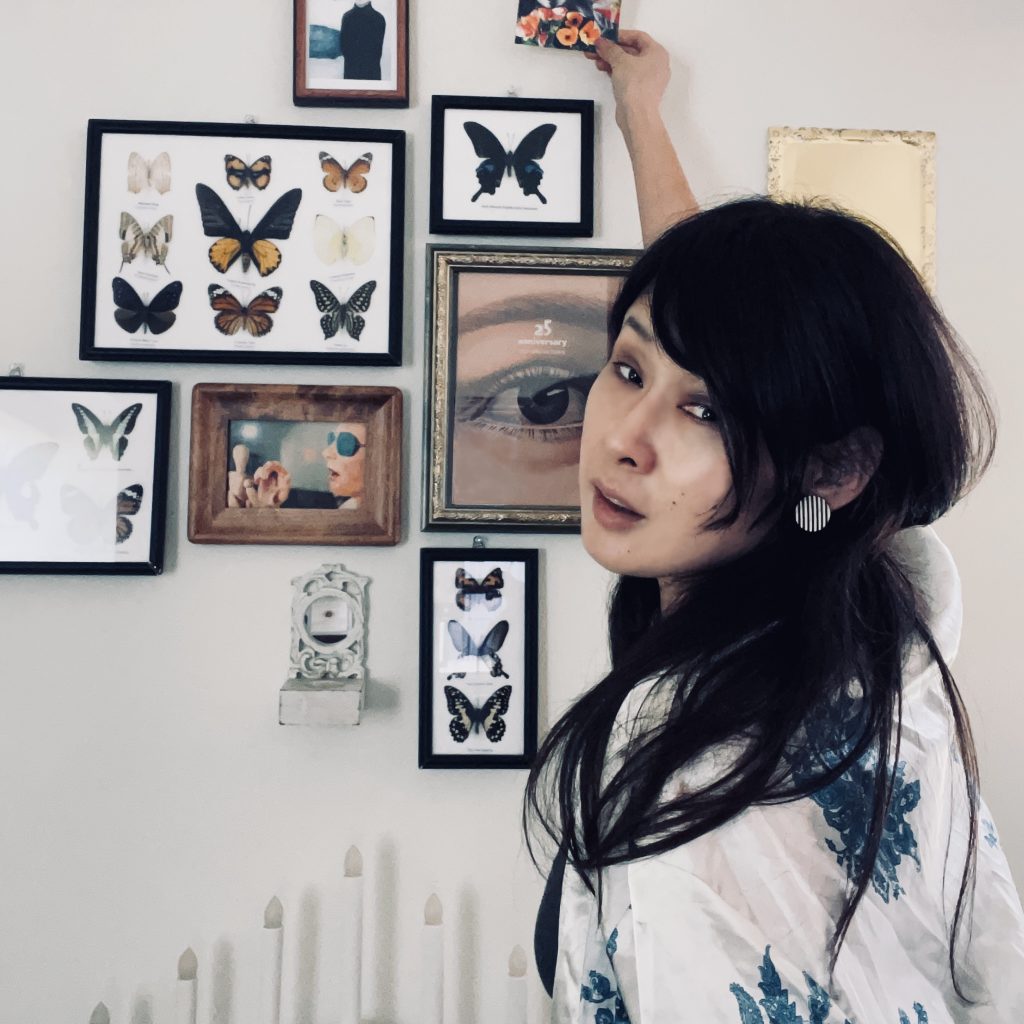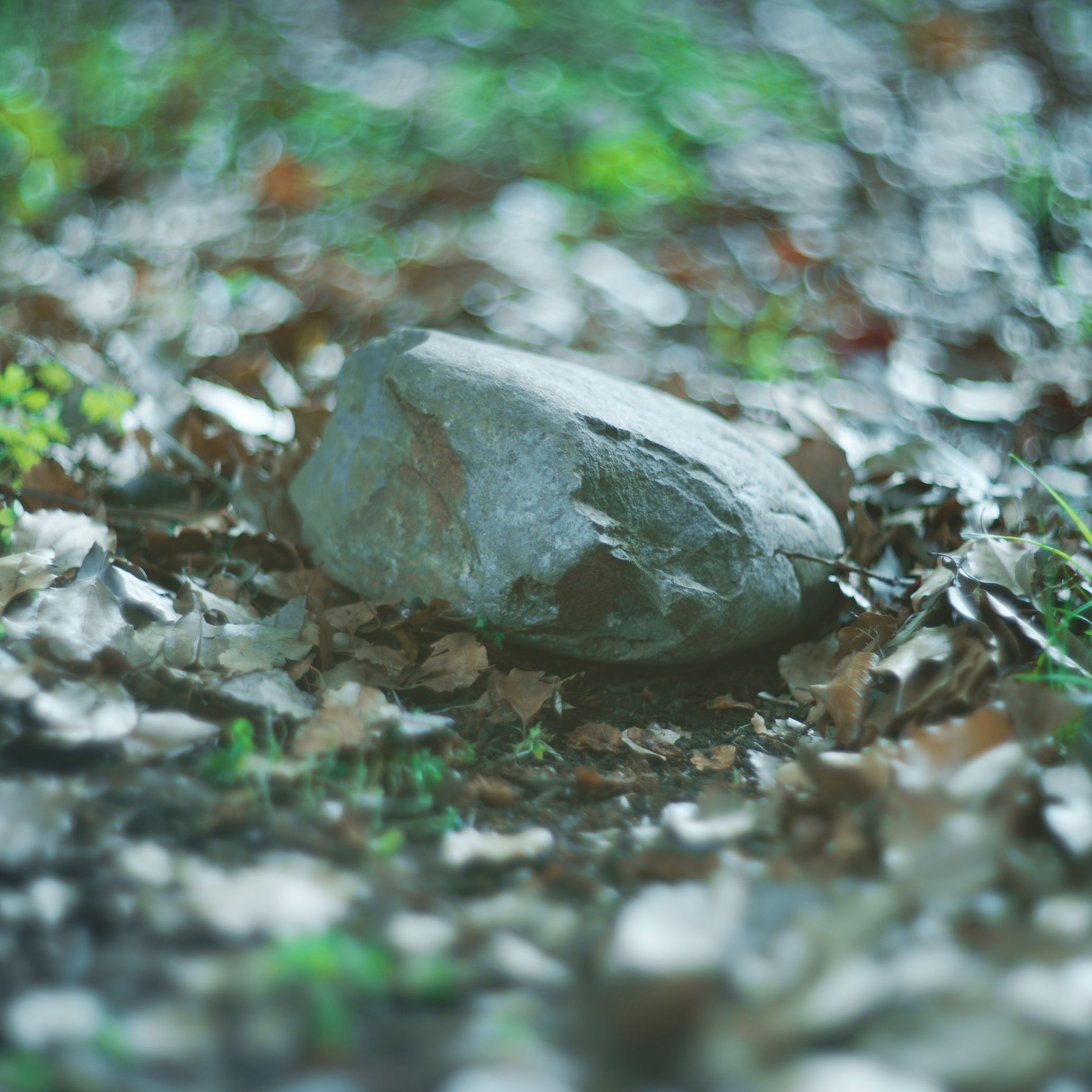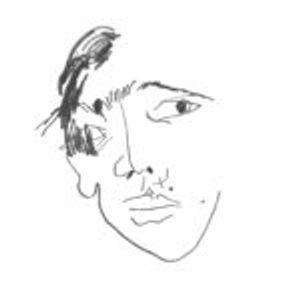Hirono Nishiyama has been making beguiling and twinkly music for 22 years. Her kaleidoscopic songs, which are sung in a variety of languages, often seem to contain scenes or worlds of their own. Nishiyama first landed on Nobukazu Takemura’s Childisc label in 1999, where she released three albums under her own name and appeared on others in collaboration with Takemura, the playful and inventive DJ and producer; the nature of her music seemed to naturally correspond with his. These early works are now available for the first time through streaming platforms.
Nishiyama’s distinctive songs and voice have collected praise from Yayako Uchida, Akiko Yano, and Haruomi Hosono, whose label Daisyworld Discs first released songs from Nishiyama under the new identity Gutevolk in 2002. The Scottish musician and cultural historian Momus, in the early 2000s, praised Nishiyama’s work as an ideal manifestation of what he called “cute formalism.”
Under her own name and with Gutevolk, Nishiyama has participated in the making of songs, music videos, and commercials, all of which are guided by eclectic sensibilities around language, genre, and style. Despite the consistent release of Nishiyama’s work and its blessings from revered artists work and its blessings from revered artists, it has rarely been discussed in her own words.
Where does Nishiyama stand now, between identities and projects, in 2021? I had the good fortune to interview her, and learn more about her evolving body of work.
Before her debut to her encounter with Nobukazu Takemura
−−Your single Funé, from this year, is the first song released under the name Hirono Nishiyama in 20 years. In addition, your first three albums are now available on streaming platforms. How have your thoughts changed on using your own name with your music?
Hirono Nishiyama: Funé was created with my current feeling, without being conscious of past works.Therefore, many people may have an impression that is different from the style of Hirono Nishiyama in the past. What I’m doing with Gutevolk is like an evolution of Hirono Nishiyama 20 years ago. I resume activities as Gutevolk in order to do things I couldn’t do in the Childisc days, such as playing a live concert with my friends as if it were a hobby band or collaborating with other artists, etc. Gutevolk creates a conceptual world every time, so I thought it would be nice to have a place to do something a little rougher in a good way.
−−In the 90s, before the release of your debut album, you stayed in Paris and recorded the sounds of rare instruments collected by an anthropologist— is that right? What kind of experience was that?*
Nishiyama: Who is the anthropologist …? I’m sorry, I can’t remember. Where did you find that information? If I was talking somewhere in the past, I’ve completely forgotten. Or maybe Momus, who I met in Paris at that time? His dad is a linguist, so I wonder if that story was mixed …? At that time, there was a song I was making, so he wrote the lyrics in coined words and put them in the song. It’s a nice song. And It’s still unreleased, so I hope to release it soon as well.
−−How did you meet Nobukazu Takemura?
Nishiyama: When I started making music, I made a few songs, and I made some demonstration audiotapes of a few songs to distribute to my friends. One of my friends invited me to hand over the tape when Mr. Takemura would be DJing in Tokyo. Although I went to the venue, I had no chance to enter because Mr. Takemura was surrounded by a lot of fans and was taking pictures all the time. I’ve always been hesitating on the corner. A friend who looked at it forcibly took the demo tape and handed it to Mr. Takemura. A few days later, I received a phone call from Mr. Takemura, and at that time, I was about to start a label called Childisc, so I just made my debut. I really liked his music and worldview the most in the world, I was glad that he was able to sympathize with my work.
Suffering from the “cover songs syndrome”
−−What can you tell me about the photo on the cover of Kaisentou?
Nishiyama: The photo on the jacket of “Kaisentou” was taken in the attic of a church in Kamakura, with stained glass and my shadow reflected on the wall.
−−As Gutevolk, you recently released the album Cover Syndrome. I really like your selection of songs. And the title suggests something with a strange nuance.
Nishiyama: I’ve wanted to cover a lot of songs for a few years now, but I didn’t have the time to get started. In that way, if you put up with what you want to do, you would get sick…eventually, no matter what kind of music I heard, I started thinking, “I can cover this song” or “no, this is not the case,” and I was completely suffering from the “cover songs syndrome,” haha. That’s why the title is literally “Cover Syndrome.” Even the jacket is my figure that imitates Vermeer’s image the girl with pearl earrings. At this point, it’s already serious sickness. This time, I focused on Western music. The production was enjoyable. I was working on about 14 songs at the same time, but at the moment, I finished 7 songs to my liking, so it turned out to be a mini-album. I plan to release a cover series regularly until the cover syndrome is gone.
−−What have you been listening to recently?
Nishiyama: I listen most recently to classical music such as ballet music. I’m doing classical ballet, so I think I have more opportunities to listen to it on a daily basis. The rest is bossa nova. I really liked João Gilberto, João Donato, Edu Lobo, and Wanda Sá when I was young. I also listen to Indian music and Celtic music. In addition, I often search for and listen to the music I hear in movies and serials later. I love the theme song of Stranger Things, but it’s unfortunately too short. I’m planning to cover this song under the name of Gutevolk. I’m arranging it with a length.
−−Can you describe one of your earliest memories?
Nishiyama: Since my grandfather was a collector of Latin music records and folk instruments, I had many opportunities to come into contact with music on a daily basis from an early age. Because I’ve always been close to my grandfather. It was my routine every morning to get up earlier than my parents, go to my grandparents who live on the same premises, have tea and pickled plums [umeboshi], and listen to music together. I feel that my grandfather has the strongest influence on my sense of rhythm, chords, and in that we’re umeboshi lovers.
−−How do you feel when you use your voice in other languages?
Nishiyama: I think I’m singing in any language, but I still like Japanese. However, if the lyrics do not go well, it is often an onomatopoeia. Onomatopoeia is the best in terms of melody nuances and singing.
−−It’s really a pleasure to get to interview you, as you have so seldom given interviews. Do you like talking about your work?
Nishiyama: Yes. (laughs)
−−Is there anything you can say about your plans for this year or thereafter?
Nishiyama: As Hirono Nishiyama, I plan to collaborate with Tenniscoats’ Takashi Ueno and release a bossa nova cover album next year. When I have some songs, I’m thinking of doing a loose live stream. Gutevolk will release the original new single “Awakening Planet” for the first time in 4 years on the 7th of July. A very cute music video produced by Koichiro Tsujikawa, a video creator, is out now. This time, he suggested a unique way to share the production process of a music video in real time on social media until it is completed. Each day he sent me a stop-motion fragment that he had shot as a sketch, and I responded to it with sound. As an exchange diary of sounds and images, we kept posting the diary on social media from June 1 to July 9. I was really happy every single day just to be in touch with his childlike purity of sensibility. I find myself naturally resonating with him. I’ve never felt anything like this before. It is a very cute movie series, so I hope you will enjoy it as well. The first chapter has been ended, and we received great feedbacks, so we are planning to restart the second chapter for next music video after autumn.
In addition, there are also songs newly created from this exchange diary, so I’m planning to release these spin-off songs as a series of monthly singles from September onwards. I also plan to release a new album next year around the time the second music video is completed.
※This information came from an anecdote written by Nick Currie, aka Momus, on his now-defunct LiveJournal blog Click Opera.
※Gutevolk x Koichiro Tsujikawa collaboration project “Awakening Planet” (See below for social media)
Gutevolk
A solo unit by Japanese musician Hirono Nishiyama. Evil and pop world view with original sound that seems to have eaten up various genres and lyrics in multinational languages and coined words, with multicolored musical instruments and sounds studded with electronic sounds as a base expressing. In 1999, she started working as Hirono Nishiyama from <Childisc> sponsored by Nobukazu Takemura. In 2002, she transferred to <Daisy World Discs> sponsored by Haruomi Hosono and started her activities under the name of Gutevolk. Since then, while releasing a large number of works in Japan and overseas, she has been involved in concert tours, TV advertisements, performing arts, and has continued her activities with unique steps such as releasing DJs and her own music videos.
Official Web:www.gutevolk.com
YouTube:Gutevolk
Instagram: @gutevolk_music
Twitter: @Gutevolk
Kocihiro Tsujikawa
Videographer. He started working as an art director for CD covers and book bindings, and started making videos when he was offered to make a music video for a friend’s musician. Currently, he is producing mainly video works such as advertisements, music videos, short films, etc. in various genres such as planning on the web and graphics, both domestically and internationally.
Instagram: @koichirotsujikawa
Twitter: @K_Tsujikawa




